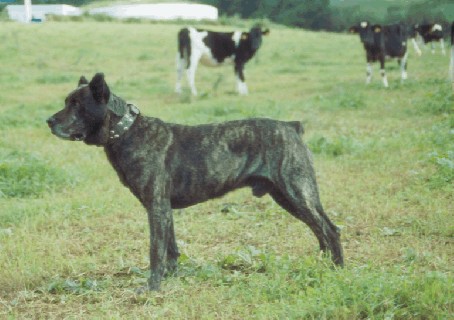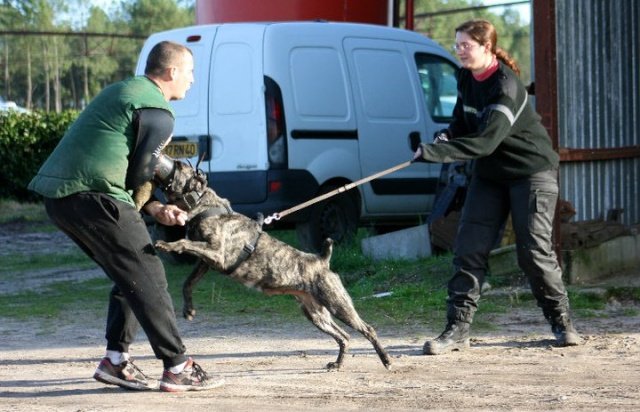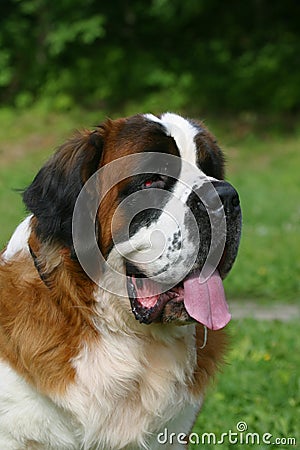ShopDreamUp AI ArtDreamUp
Deviation Actions

Info, Rules & Guidelines || stopBSL FAQ || The List of Targeted Breeds
The Complete Member List || !RARE! Breed of the Month Features
Welcome to Our !RARE! Breed of the Month Feature!
Previous !RARE! Breeds of the Month
January's !RARE! Breed of the Month
February's !RARE! Breed of the Month
March's !RARE! Breed of the Month
April’s !RARE! Breed of the Month
May's !RARE! Breed of the Month
June's !RARE! Breed of the Month
July's !RARE! Breed of the Month
2011 !RARE! Breed of the Month Recap
Featuring August’s !RARE! Breed of the Month
the Azores Cattle Dog / Cão Fila de São Miguel / São Miguel Cattle Dog

What is a Azores Cattle Dog?
The Cão de Fila de São Miguel (frequently translated into English as the São Miguel Cattle Dog, but other names, such as Azores Cattle Dog, may be used) is a dog breed of molosser type originating on São Miguel Island in the Azores, an island chain which is one of the autonomous regions of Portugal. The breed was originally used for working with cattle.History & Origin
The breed is named for São Miguel Island in the Azores, settled by the Portuguese, beginning in 1439. Another of the Azores, Terceira Island, is known for bullfights and cattle raising; large dogs used on cattle there were brought to São Miguel Island and contributed to the development of the breed.According to the original breed standard, the existence of the Cão de Fila de São Miguel has been documented since the early 19th century. A breed standard was developed in the breed's area of origin and first published in 1984. This standard was recognised internationally in 1995, when the standard was published by the FCI. Although described (and formerly used) as a cattle dog, the Cão Fila de São Miguel is actually a molosser, and is so recognised by the FCI in Group 2, Section 2, Molossoid breeds (number 340.) Today it is primarily used as a guard dog and companion.
Traditionally, the tail is docked, although this practice is now illegal in many areas. In addition, the ears were traditionally cropped short; cropped ears are characteristic of dogs used for fighting. The ears are cropped short and rounded off on top. The reasons for these traditions are unknown.
Literature about the breed warns that they can be very aggressive, a characteristic said to be valuable in handling feral cattle, but potentially dangerous in a pet.
Today, dogs from São Miguel are exported to North America and other areas of the world where they are bred and promoted for the rare breed market. Minor kennel clubs and registries maintained by individual breeders write their own versions of the breed standard, which may vary from the breed standard developed on the island of São Miguel and recognised internationally by the FCI. Dogs of the breed may be sold under the original breed name, Cão de Fila de São Miguel, or any of the many translations and versions of the name.

Appearance
A large dog, but not oversize; up to a maximum of 60 cm (23.6 ins) at the withers and 35 kg (77 lbs) in weight, with females slightly smaller. The general appearance is of a normally proportioned, deep chested, muscular dog with a broad head and medium length neck, straight back, and long legs. The tail is held up and is slightly curved. Ears are drop unless they are cropped. The coat is a brindle of brown (pale brown is described as fawn) or grey, with black; it is short, smooth and harsh to the touch, with a short fringe on the tail (if undocked) and on the backs of the rear legs.
Temperament
A large, aggressive, working dog, the Cão de Fila de São Miguel must be well socialized at an early age if it is to be kept as a pet, and supervised when around unfamiliar children. As with all working dogs, it must be given regular training and a job to do. Temperaments of individual dogs may vary greatly. Suitability of an individual dog for a particular kind of work may depend on the quality of early training. This breed creates a deep bond with its owner, being very gentle, loving and receptive, despite being aggressive towards strangers and other dogs. When trained well, these dogs make fantastic family pets as they are highly intelligent and docile with those they love.

@ wikipedia.org
Featuring August’s Targeted Breed of the Month
the St. Bernard / Alpine Mastiff

The St. Bernard is a breed that is subjected to Breed Specific Legislation due to the similarities in appearance they have with other large molosser type breeds and is currently restricted/banned in certain cities in the US.

.jpg)
Originally used to locate freezing and helpless travelers during snowstorms, the Saint Bernard now uses his intelligence and strength in conformation and obedience competitions, cart pulling and weight pulling. Although powerful and muscular in build, Saints possess a gentle and dignified temperament. Their coats can be long or short and range in color from deep brown to brown-yellow. White markings are required.
It is generally believed that the dogs eventually called Saint Bernards were bred from dogs previously existing in the Swiss countryside. The original Saint Bernard was a short-haired dog and was introduced to the Hospice (a refuge for travelers crossing the treacherous passes between Switzerland and Italy) as a guard dog, a carting dog and an avalanche dog that rescued travelers trapped in the snow.

Quick Facts:
• Country of Origin: Italy/Switzerland
• Functionality: Working dog
• Coat Color: Range in color from yellow-brown to deep brown, always with white markings. Long or short-haired coat.
• Height: 27 1/2 - 35 1/2 inches(70-90cm)
Both long-haired and short-haired Saint Bernards shed and need regular grooming. New owners should be prepared for drool – there is no such thing as a dry mouth Saint. This breed makes wonderful family companions with obedience training and daily exercise, but due to their larger size, may do better living in the country or suburbs.


@ akc.org
The System is Fixed! The Gallery is Open!
Info, Rules & Guidelines || stopBSL FAQ || The List of Targeted Breeds
The Complete Member List || !RARE! Breed of the Month Features
The System is Fixed & The Gallery is Now Open for Submissions! From stopBSL (https://www.deviantart.com/stopbsl) Administrative Team to Our Members
Hi everyone! Your stopBSL (https://www.deviantart.com/stopbsl) founder sassawj (https://www.deviantart.com/sassawj) is here to let you all know that I have now fixed the unexpected glitch in stopBSL (https://www.deviantart.com/stopbsl)'s system that had prohibited all members and even administrators from submitting artwork to the group's gallery folders. This was only found out today, thanks to a member sending in a note wondering why they could not submit to the group's gallery; this is t
Featuring March's !RARE! Breed of the Month
Info, Rules & Guidelines || stopBSL FAQ || The List of Targeted Breeds
The Complete Member List || !RARE! Breed of the Month Features
Welcome to Our !RARE! Breed of the Month Feature!
January's !RARE! Breed of the Month
February's !RARE! Breed of the Month
2011 !RARE! Breed of the Month Recap
2012 !RARE! Breed of the Month Recap
2013 !RARE! Breed of the Month Recap
2014 !RARE! Breed of the Month Recap
2015 !RARE! Breed of the Month Recap
Featuring March's !RARE! Breed of the Month
the Lancashire Heeler
What is a Lancashire Heeler? The Lancashire Heeler; also known as the Ormskirk Heeler, is hailed as the smallest breed of herding dog that
Featuring February's !RARE! Breed of the Month
Info, Rules & Guidelines || stopBSL FAQ || The List of Targeted Breeds
The Complete Member List || !RARE! Breed of the Month Features
Welcome to Our !RARE! Breed of the Month Feature!
January's !RARE! Breed of the Month
2011 !RARE! Breed of the Month Recap
2012 !RARE! Breed of the Month Recap
2013 !RARE! Breed of the Month Recap
2014 !RARE! Breed of the Month Recap
2015 !RARE! Breed of the Month Recap
Featuring February's !RARE! Breed of the Month
the Ca de Bou
What is a Ca de Bou?The Ca de Bou, also known as the Perro de Pressa Mallorquin or the Mallorquin Bulldog, is a medium to large size Mollisian breed whose origin is riddled with c
Petition to Ban Merle to Merle Breeding
Info, Rules & Guidelines || stopBSL FAQ || The List of Targeted Breeds
The Complete Member List || !RARE! Breed of the Month Features
Australian Shepherd Club of America,
Please Ban Merle To Merle Breeding by Keller's Cause @ www.change.org
Sign the Petition Here29,450 supporters thus far, with 5,550 signatures still needed to reach 35,000
About the Petition: By signing, you accept Change.org’s terms of service and privacy policy, and agree to receive occasional emails about campaigns on Change.org. You can unsubscribe at any time.
This petition was put together by Keller's Cause on Change.org; you can read about Keller here, a doub
Featured in Groups
© 2012 - 2024 stopBSL
Comments7
Join the community to add your comment. Already a deviant? Log In
Added to #DevNews for Aug. 31st Edition... 
Probably for the last time, but I mean this article-- when there are new articles for Sept. I will collect those for the news then.
Probably for the last time, but I mean this article-- when there are new articles for Sept. I will collect those for the news then.